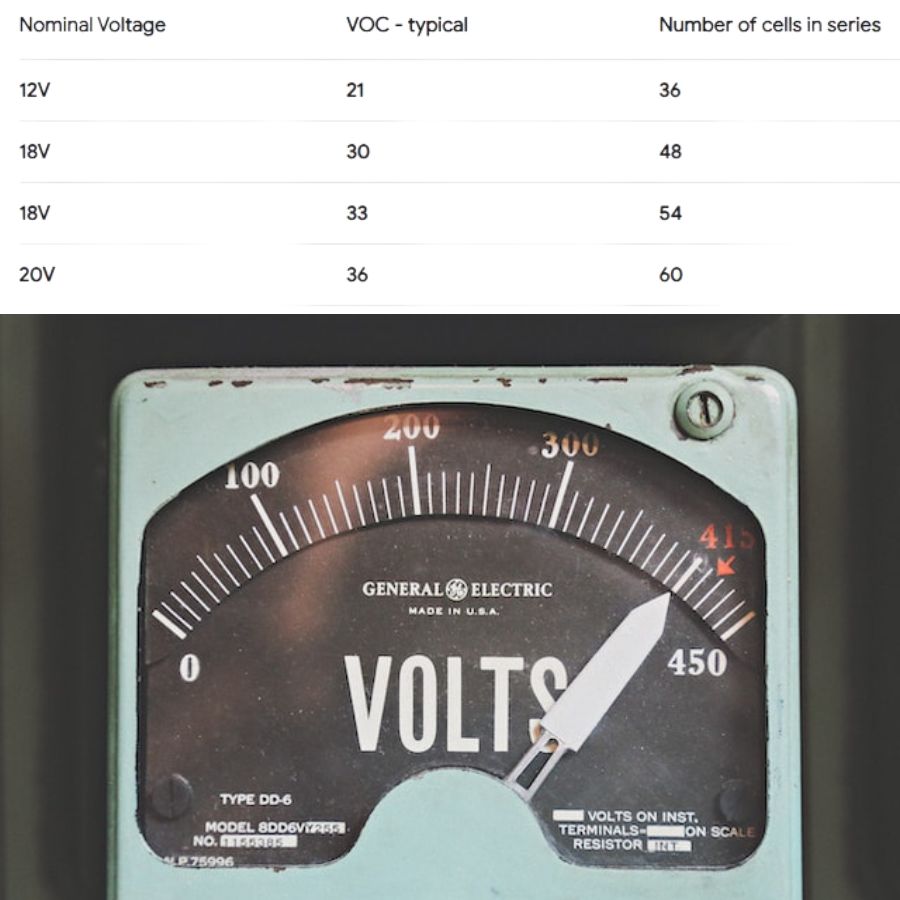Understanding the intricacies of the solar panel output voltage is crucial for harnessing the maximum potential of solar power in BC, Canada.
As the primary components responsible for converting sunlight into usable electrical energy, solar panels play a pivotal role in generating electricity from the sun. In addition, it helps determine how much electricity you can expect from a solar panel. It is essential to comprehend the solar panel output voltage concept and its implications to optimize their performance.
This comprehensive guide will delve into the factors affecting voltage output and explore the different voltage ratings of solar panels. It will also discuss calculations for single and multiple panel configurations and highlight practical applications.
This article will provide invaluable insights into the world of solar cell voltage. It will be helpful if you are considering installing a solar power system or want to know how many solar panels are necessary for an existing system.
Understanding Solar Panel Voltage Ratings

Photovoltaic panels have specific voltage ratings that provide essential information about their performance and compatibility with various applications.
By understanding these solar panel ratings, one can make informed decisions when designing and installing solar power systems.
There are three critical voltage ratings to consider: open-circuit voltage (Voc), maximum power voltage (Vmpp), and nominal voltage (Vnom).
Open-Circuit Voltage (Voc)
The Voc of a solar panel refers to the maximum voltage output a solar cell can provide when no external load is connected.
It represents the voltage generated by the solar cells under optimal conditions and high irradiance levels, with no current flowing through the panel.
Relationship with Temperature and Irradiance
The Voc is affected by two main factors: temperature and irradiance. The Voc of a rooftop solar panel decreases as the temperature rises. It is due to the characteristic behavior of solar cells, where higher temperatures lead to increased electron movement, reducing voltage output.
Similarly, changes in irradiance levels also impact the Voc. Higher irradiance levels generally lead to higher open-circuit voltages, while lower irradiance levels result in reduced voltage output.
Maximum Power Voltage (Vmpp)
The maximum power voltage (Vmpp) refers to the panel voltage at which a solar panel can deliver its maximum power output.
It represents the optimal operating point where the panel can efficiently convert direct sunlight into solar electricity.
Relationship with Temperature and Irradiance
Like Voc, temperature, and irradiance influence the maximum power point voltage. However, unlike Voc, the relationship is not linear.
The maximum power battery voltage decreases as temperature increases, but the effect is less pronounced than VOC. Additionally, changes in irradiance levels affect the maximum power voltage differently.
Higher irradiance levels generally result in a slight increase in the maximum power voltage, while lower irradiance levels can lead to a more significant reduction in voltage production.
Nominal Voltage (Vnom)

Nominal voltage (Vnom) refers to a standardized voltage rating assigned to a solar panel, indicating its typical operating voltage under standard test conditions. It provides a convenient reference point for system design, compatibility, and component selection.
Commonly Used Nominal Voltage Rating
Solar panels are available in various nominal voltage ratings, with typical values including 12V, 24V, and 48V. They often use these ratings in off-grid and grid-tied systems. That is where multiple solar panels are connected in series or parallel to achieve the desired voltage levels.
Selecting the appropriate nominal voltage based on the specific system requirements is essential. Again, you also consider the voltage compatibility of the associated components, such as charge controllers and inverters.
Understanding the significance of open-circuit, maximum power, and nominal voltage is essential when evaluating solar panel performance. Furthermore, it helps in determining its suitability for different applications.
These voltage ratings provide valuable insights into the behavior of solar cells. They aid in efficiently designing and integrating solar power panels into renewable energy systems.
Frequently Asked Questions
What Is the Output Voltage of a 300-Watt Solar Panel?
The output voltage of a 300-watt solar panel depends on various factors, such as the number of cells and the panel’s configuration. On average, a 300-watt solar panel may have a voltage ranging from 30 to 40 volts.
How Many Volts Should a 12V Solar Panel Produce?
A 12V solar panel should ideally produce around 17 to 18 output voltage under standard conditions. This voltage efficiently charges 12V batteries commonly used in off-grid and recreational vehicles.
How Many Volts Does a 100-Watt Solar Panel Produce?
The output voltage of a 100-watt solar panel typically ranges from 17 to 18 volts. This voltage is suitable for charging 12V batteries and powering small-scale off-grid applications such as lighting or small electronic devices.
How Many Volts Does a 200-Watt Solar Panel Produce?
Like the 100-watt solar panel, a 200-watt solar panel produces an output voltage of around 17 to 18 volts. This voltage range ensures compatibility with 12V battery systems. In addition, it supports the power requirements of medium-sized off-grid applications.


Leave a Reply